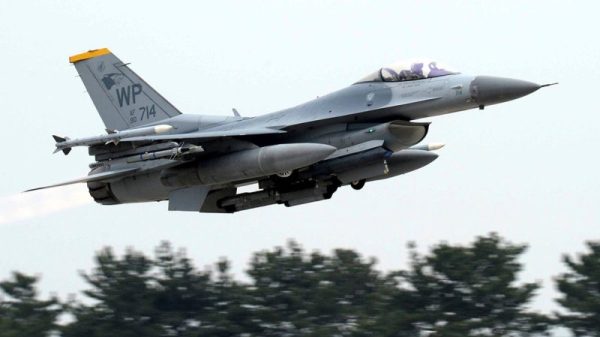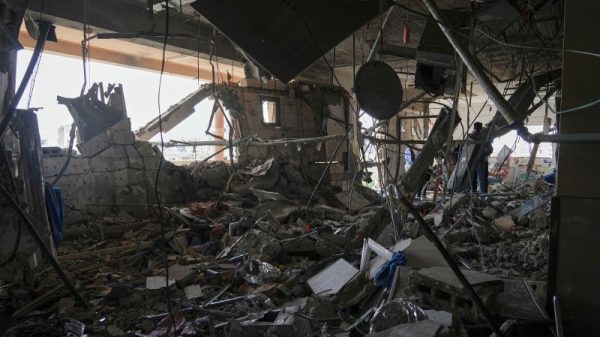The suspected attacks against the Iran-backed militant group Hezbollah are the latest in a series of covert operations that Israel’s government refuses to acknowledge but which are alleged to have been carried out by Israeli operatives.
Munich massacre response
Israel’s alleged history of planting explosives in telecommunication devices goes back as far as 1972, as part of its revenge for the killing of 11 Israelis, including athletes, at the Munich Olympics, which was carried out by the Palestinian militant group Black September.
In response, Israel launched “Operation Wrath of God” and spent years tracking down those involved in the Munich Massacre.
Mahmoud Hamshari, the Palestine Liberation Organization (PLO) representative in Paris, was among those targeted. Unidentified operatives reported to be linked to Israeli intelligence broke into his home and planted a bomb in his phone, before another person – posing as an Italian journalist – arranged a telephone interview with Hamshari. When he picked up the call and identified himself, the bomb was activated remotely.
The ‘engineer’
Tuesday’s attacks reminded many of the 1996 killing of Yahya Ayyash, Hamas’ chief bombmaker known as “the engineer,” responsible for killing dozens of Israelis.
Ayyash was killed in Gaza after his cell phone, which had been packed with 50 grams (1.76 ounces) of explosives, blew up near his head. After his killing, dozens of Israelis were killed in four retaliatory suicide bombings.
Iranian nuclear scientists
Since 2010, five Iranian nuclear scientists have been killed in foreign-linked assassinations, as Israel tries to prevent its greatest adversary from developing nuclear weapons. In August 2015, at the height of the assassinations, then-Israeli Defense Minister Moshe Ya’alon cryptically told the German magazine Der Spiegel that he could not be held responsible “for the life expectancy of Iranian scientists.”
Experts believe Israel and the United States were responsible for deploying the complex computer virus called Stuxnet that destroyed centrifuges at an Iranian nuclear facility in 2010.
Iranian officials have said they believe the cyberattack, which targeted centrifuges including those at the Natanz and Bushehr nuclear plants, originated in Israel and the United States, but neither country has commented on the malware’s origin. Notably, Stuxnet was one of the first times a cyberattack had a manifestation outside cyberspace, causing the centrifuges to spin out of control unnoticed. The pager attack is seemingly another instance of a cyberattack causing a physical consequence, unlike stealing money from a bank account or taking down a website.
Mohsen Fakhrizadeh, who was Iran’s chief nuclear scientist, was assassinated east of Tehran in 2020 by a remote-controlled machine gun operating out of a nearby Nissan. Iranian officials said the weapon had used artificial intelligence and facial recognition to detect Fakhrizadeh and open fire, before the car, reportedly packed with explosives, self-destructed.
Top Iranian officials blamed Israel for the assassination. Israel did not comment.
Human intelligence
While many of these assassinations have a sci-fi aspect, experts stressed that each operation requires high levels of human intelligence that raised questions about the security protocols of Israel’s adversaries. After Fakhrizadeh’s assassination, intelligence analysts stressed that a country or actor would still have had to smuggle in specialist equipment to stage the operation.
After this week’s events, some speculated that the explosions could have been caused by an Israeli cybersecurity breach that caused the lithium batteries in the pagers to overheat and detonate.
Kennedy said it was more likely that Israel had human operatives in Hezbollah who were able to intercept the supply chain and tamper with the devices. “The pagers would have been implanted with explosives and likely only to detonate when a certain message was received,” he said.
The New York Times reported Tuesday that Israel had hidden explosives inside a batch of pagers ordered from Taiwanese manufacturer Gold Apollo and destined for Hezbollah, and that a switch was embedded to detonate them remotely, according to unnamed American and other officials briefed on the operation.
The Iranian government and Hamas say Israel carried out the assassination. Israel has neither confirmed nor denied its involvement.

































